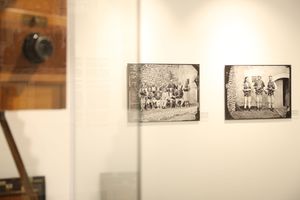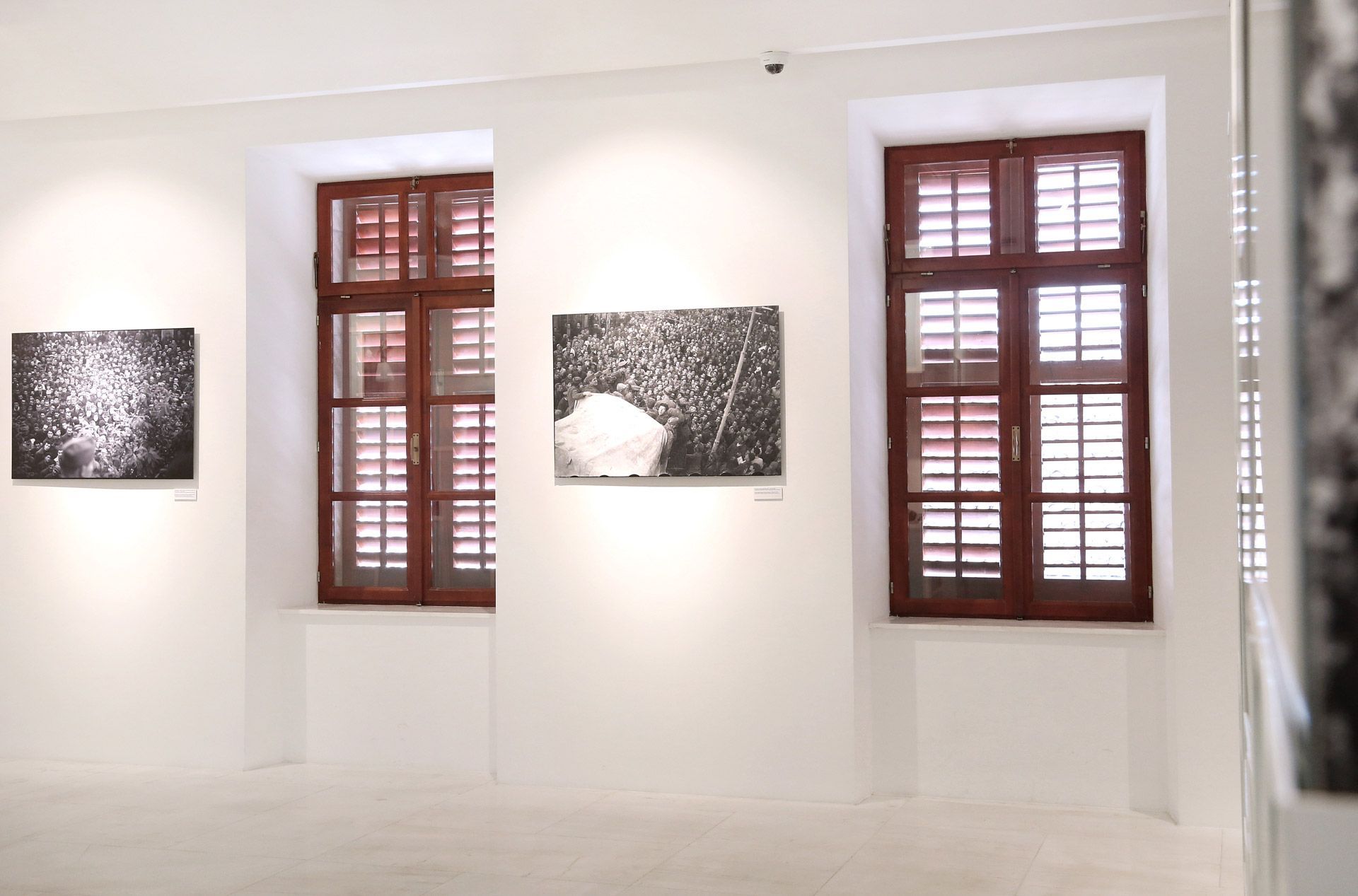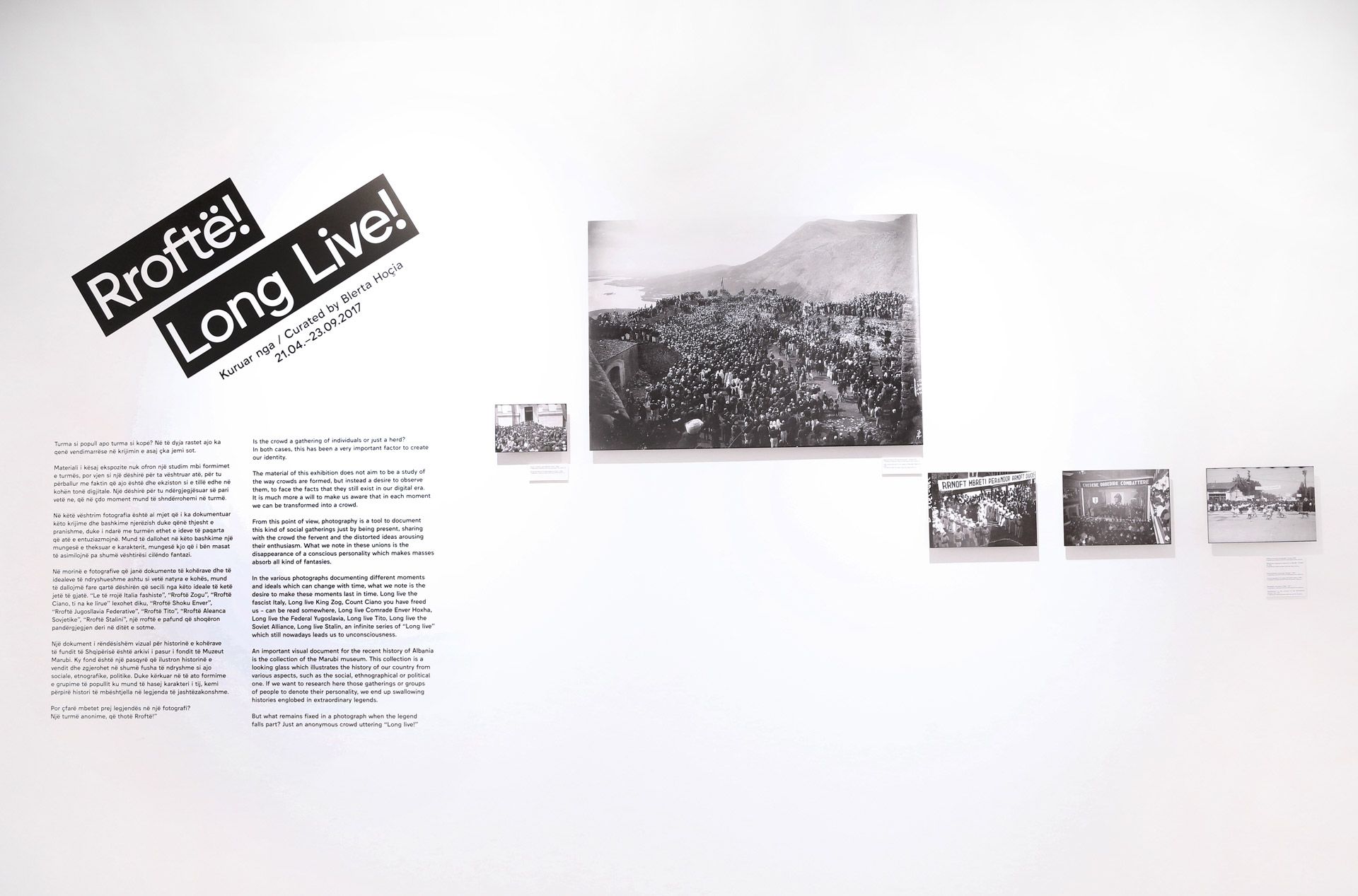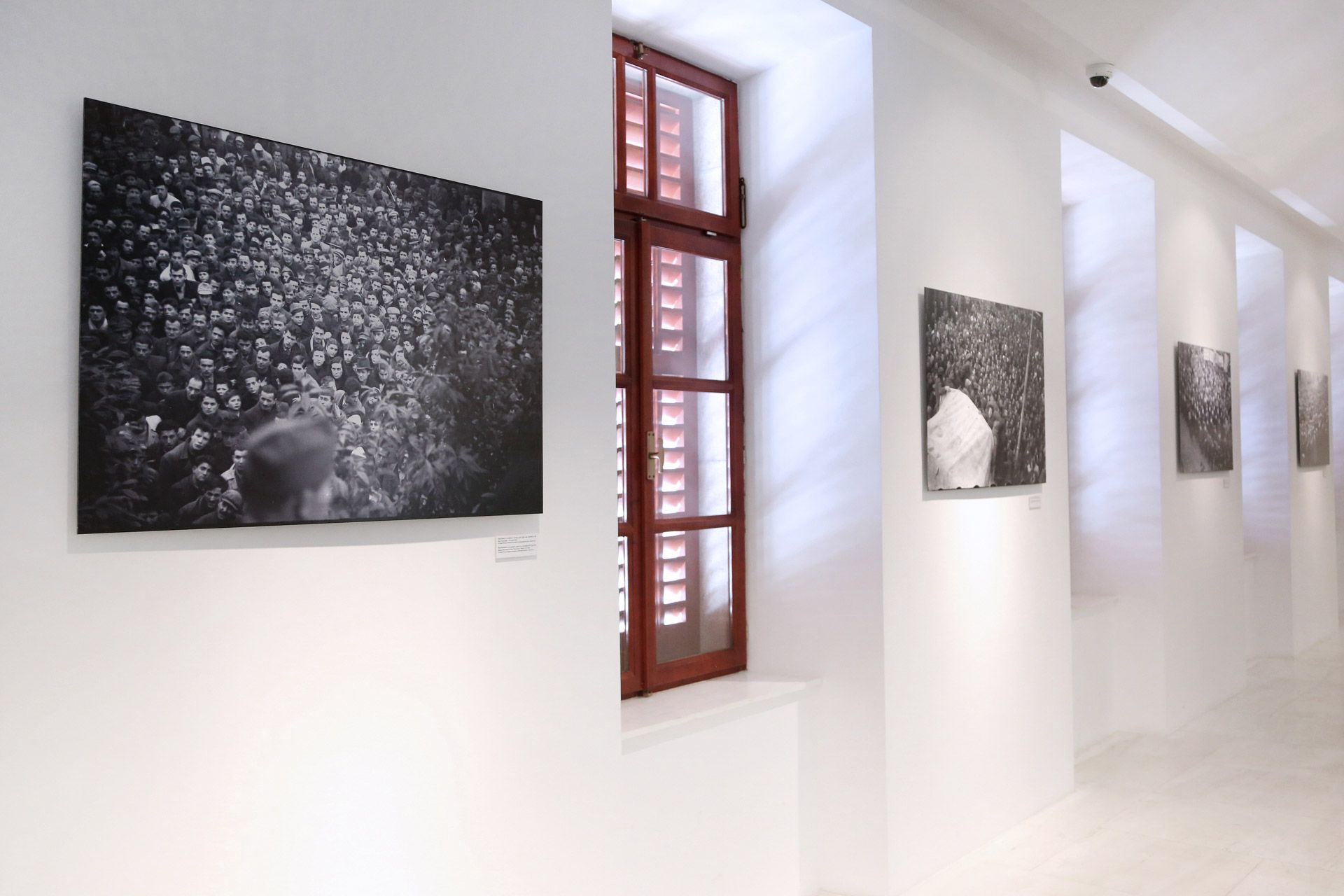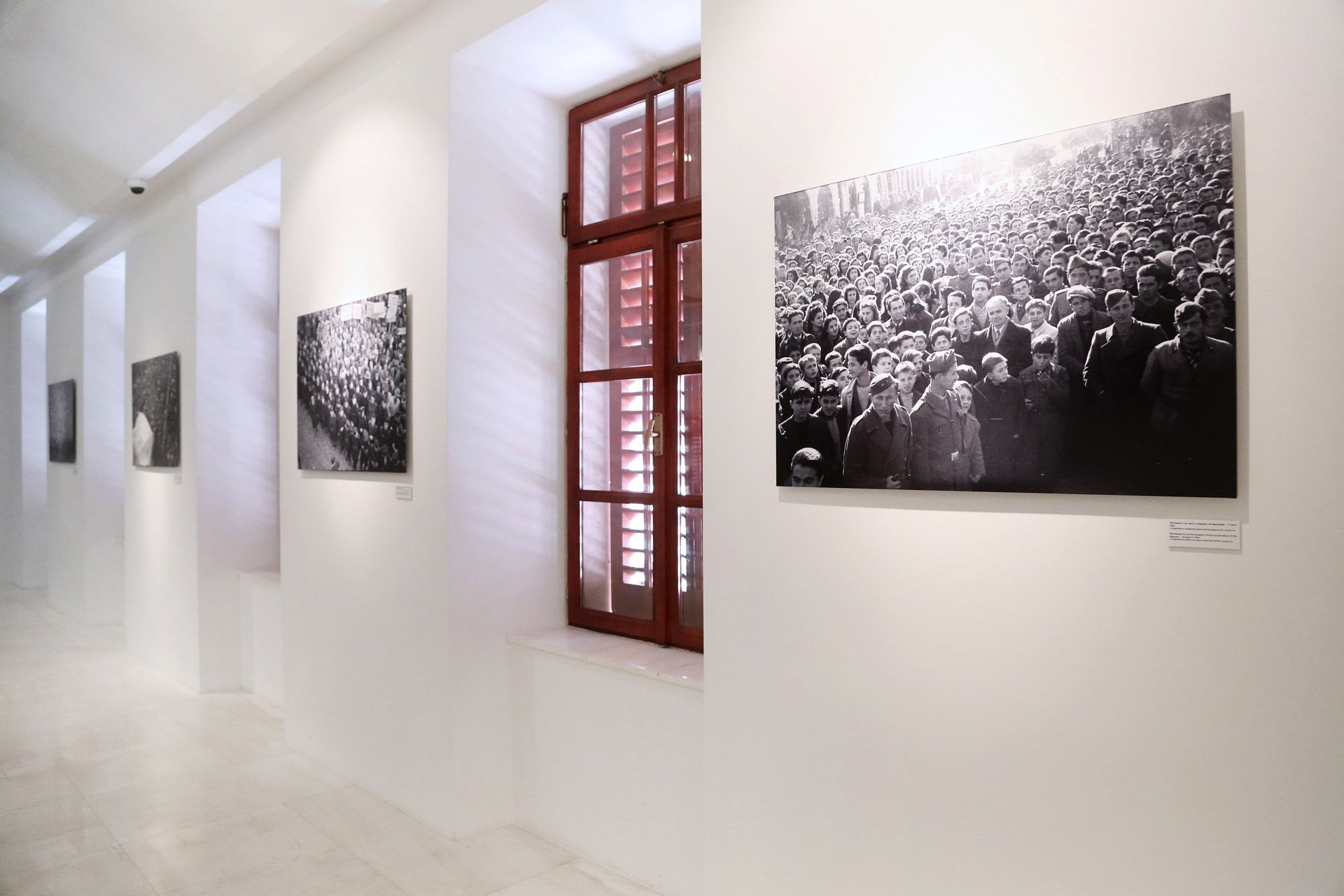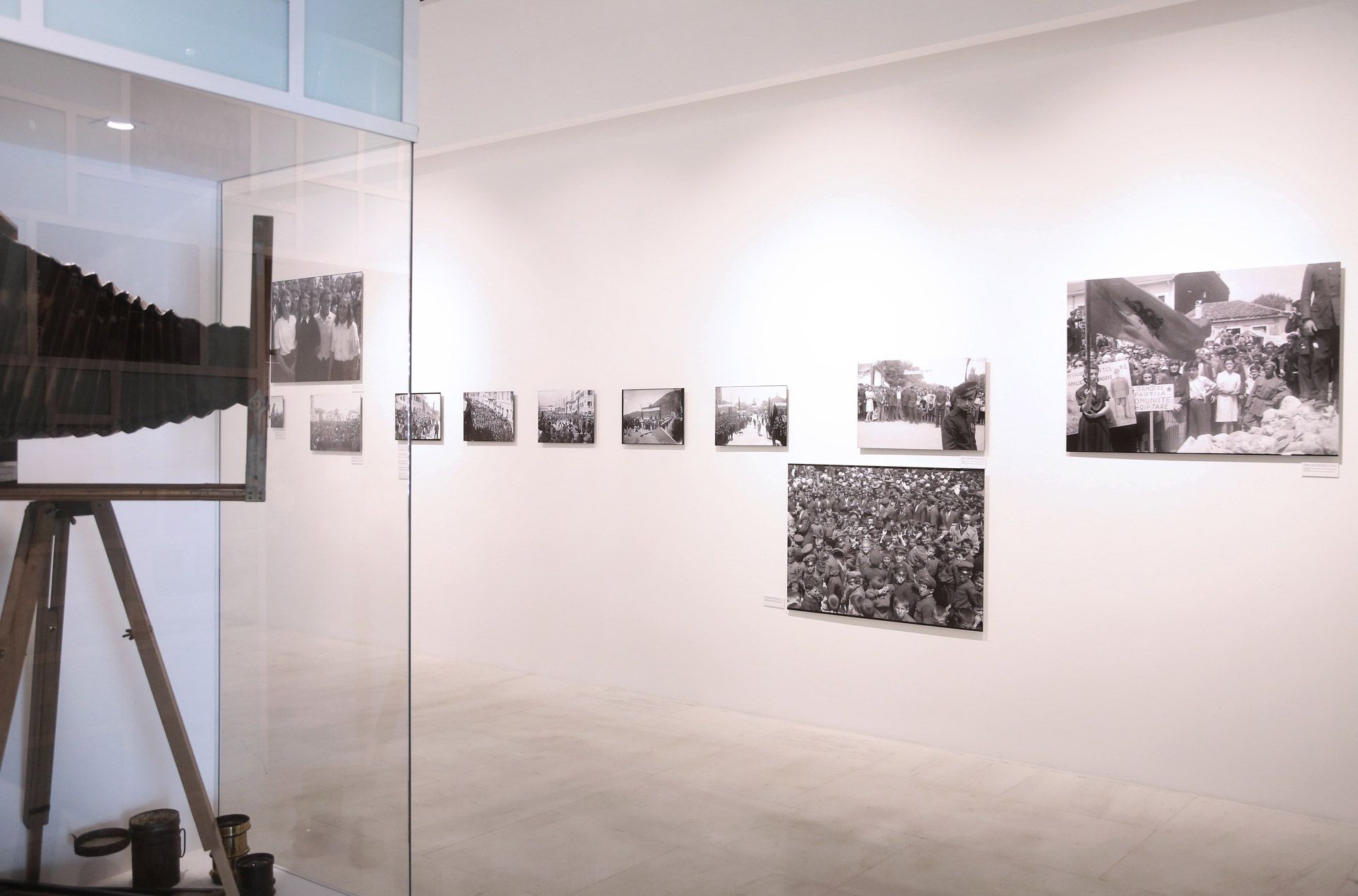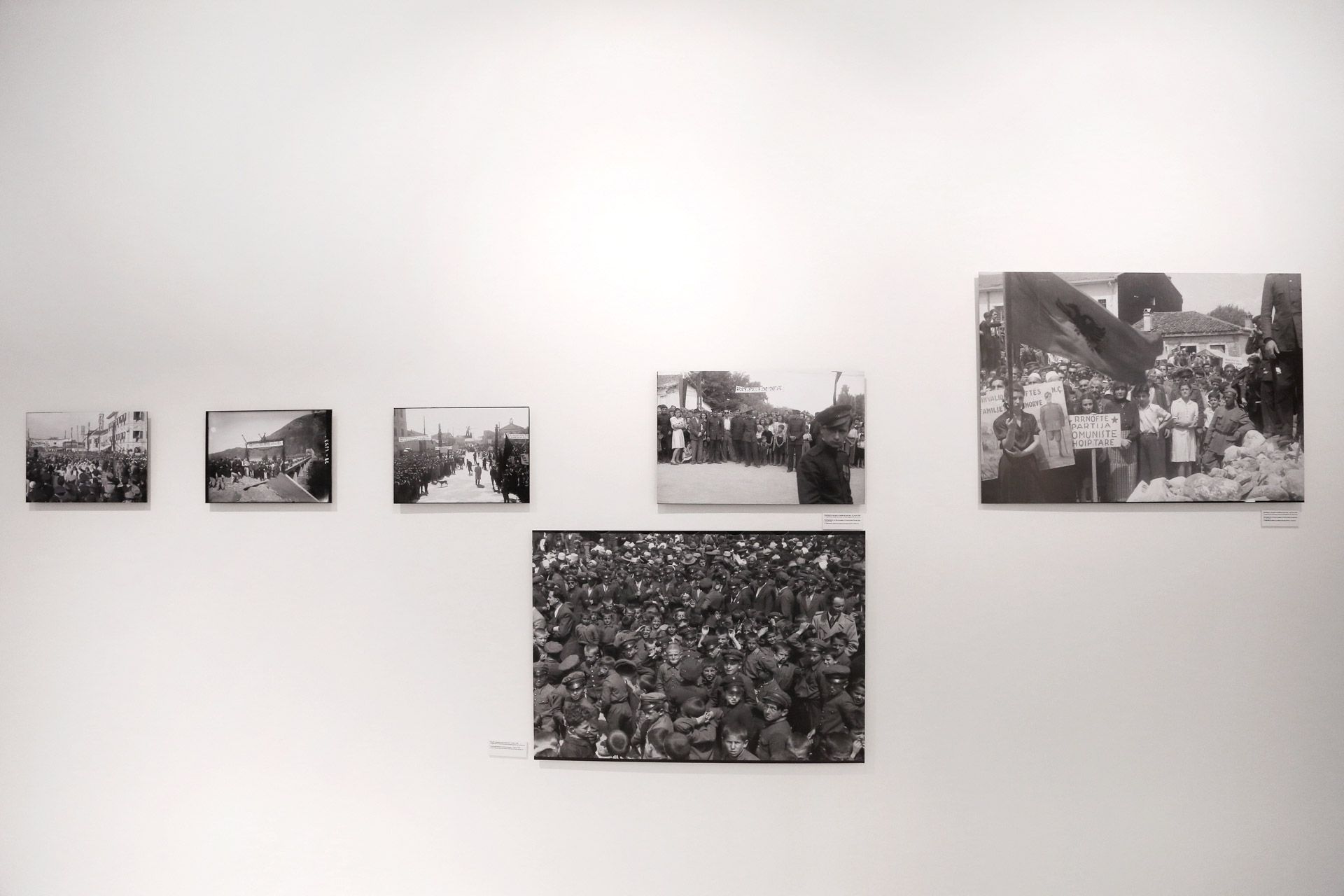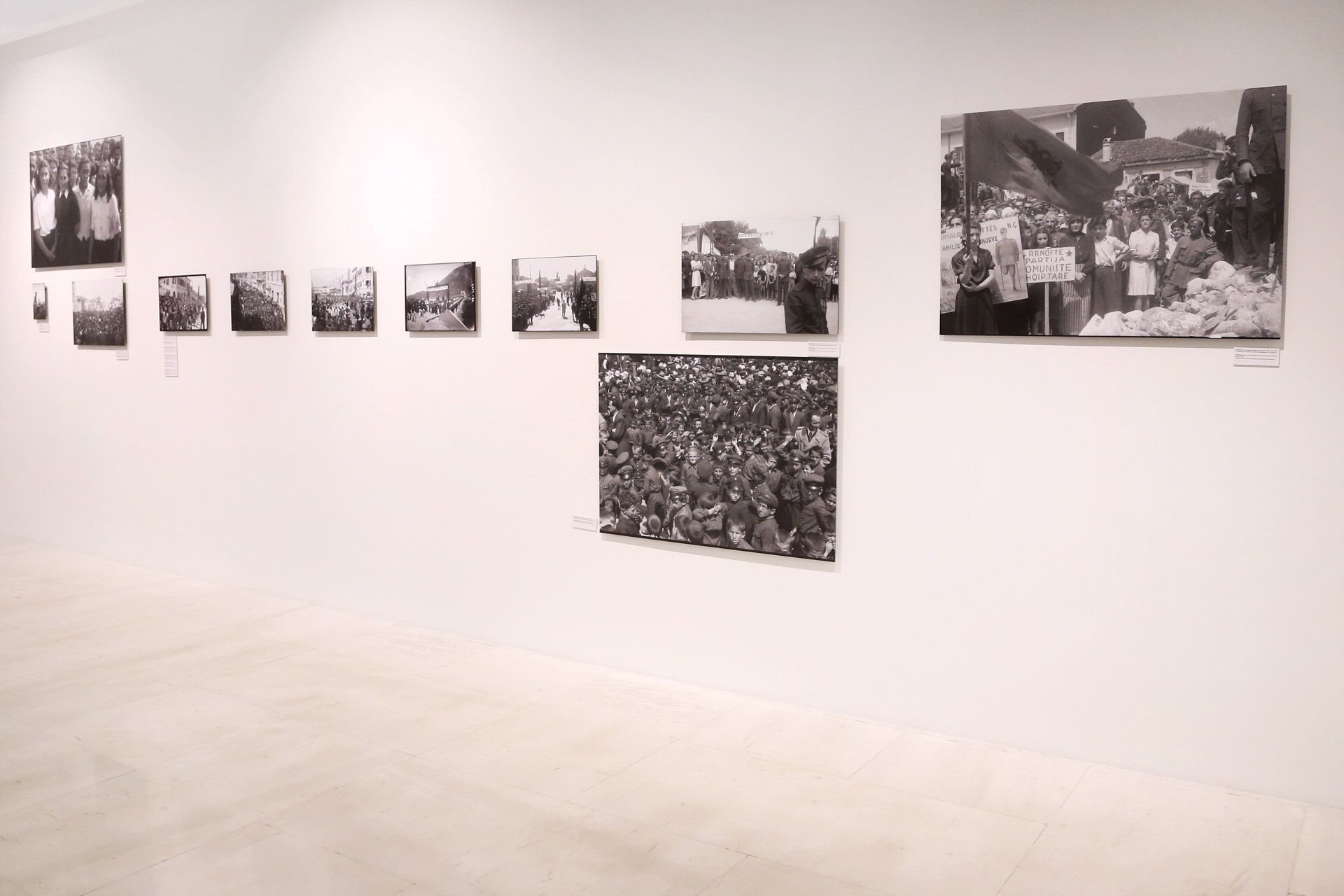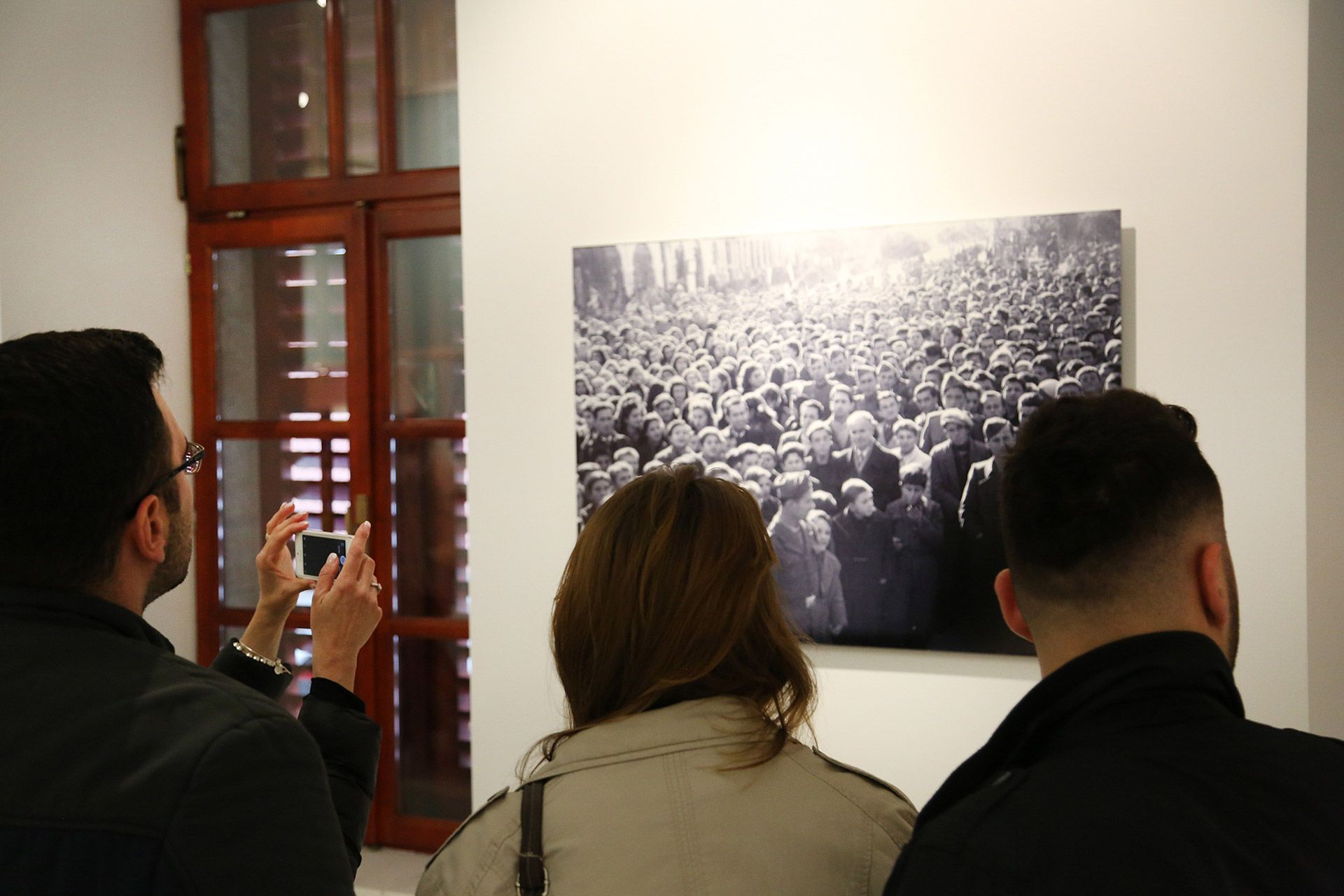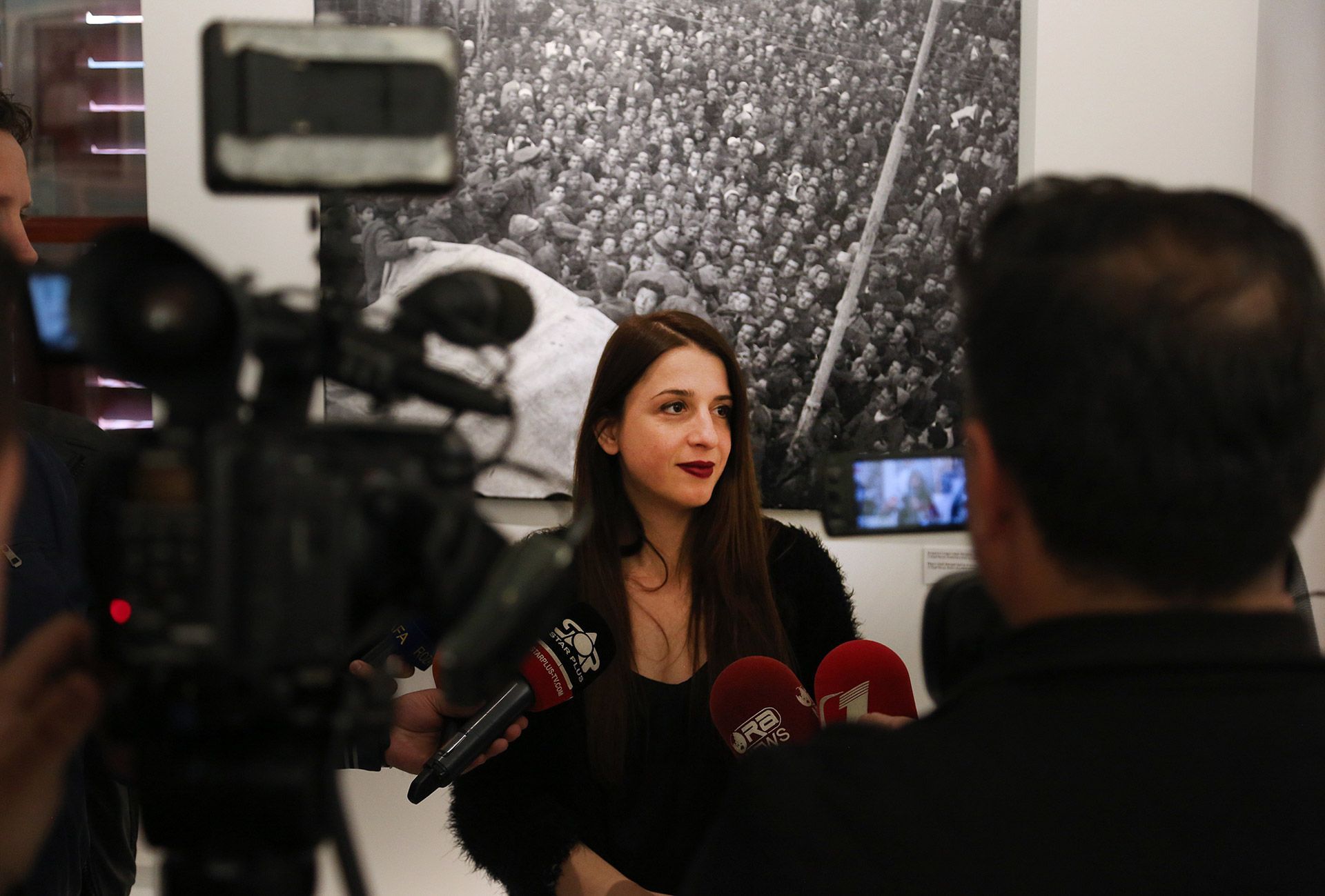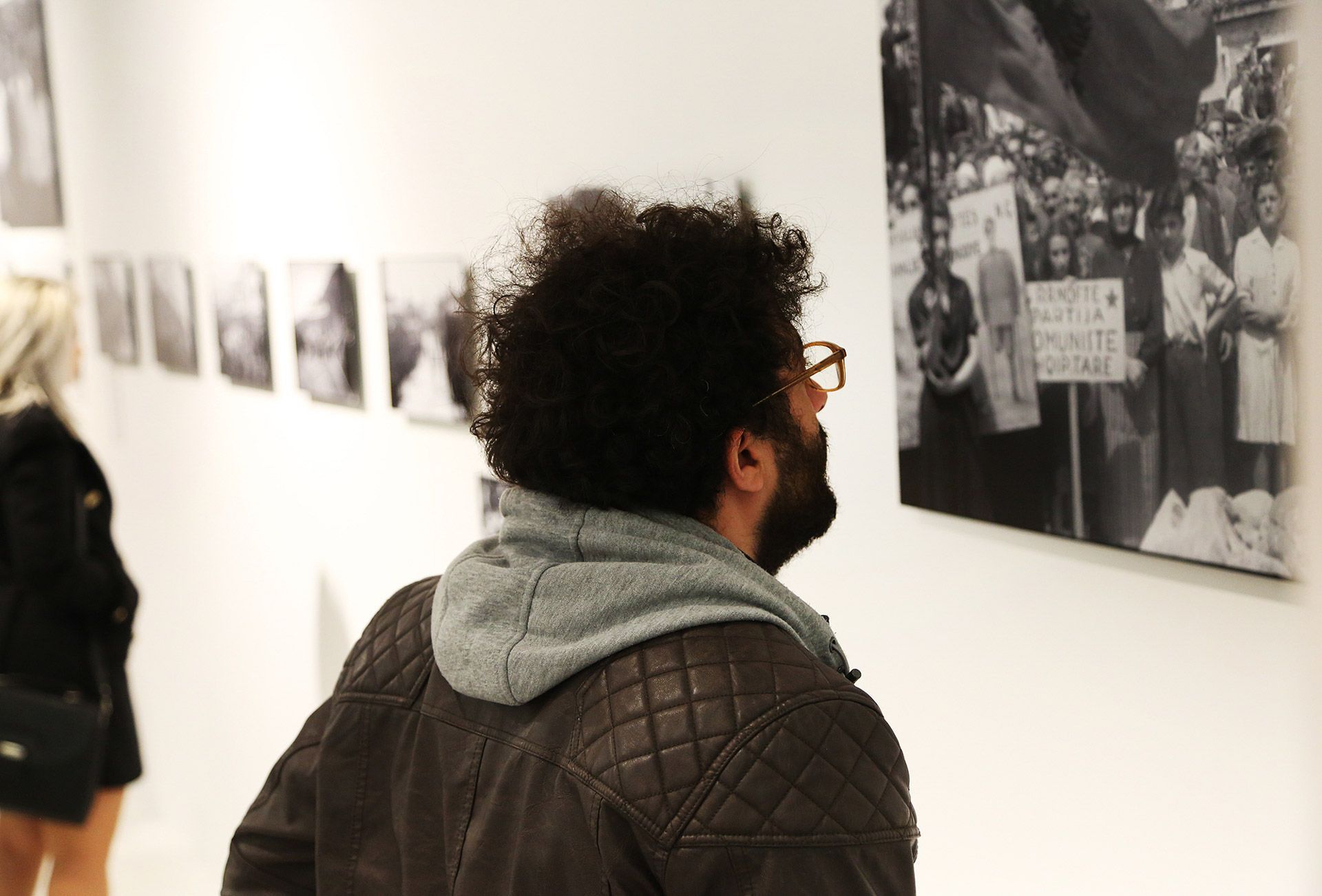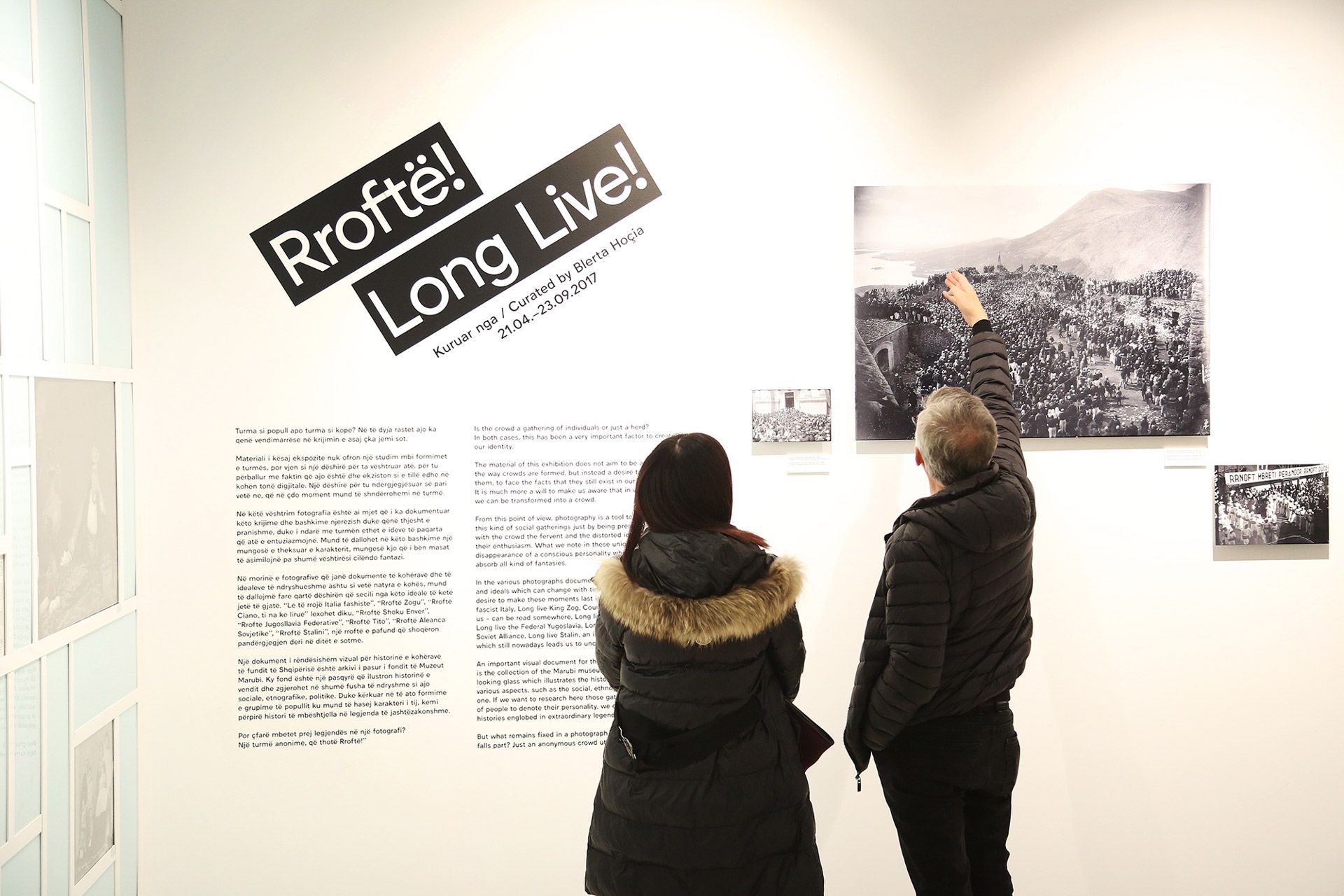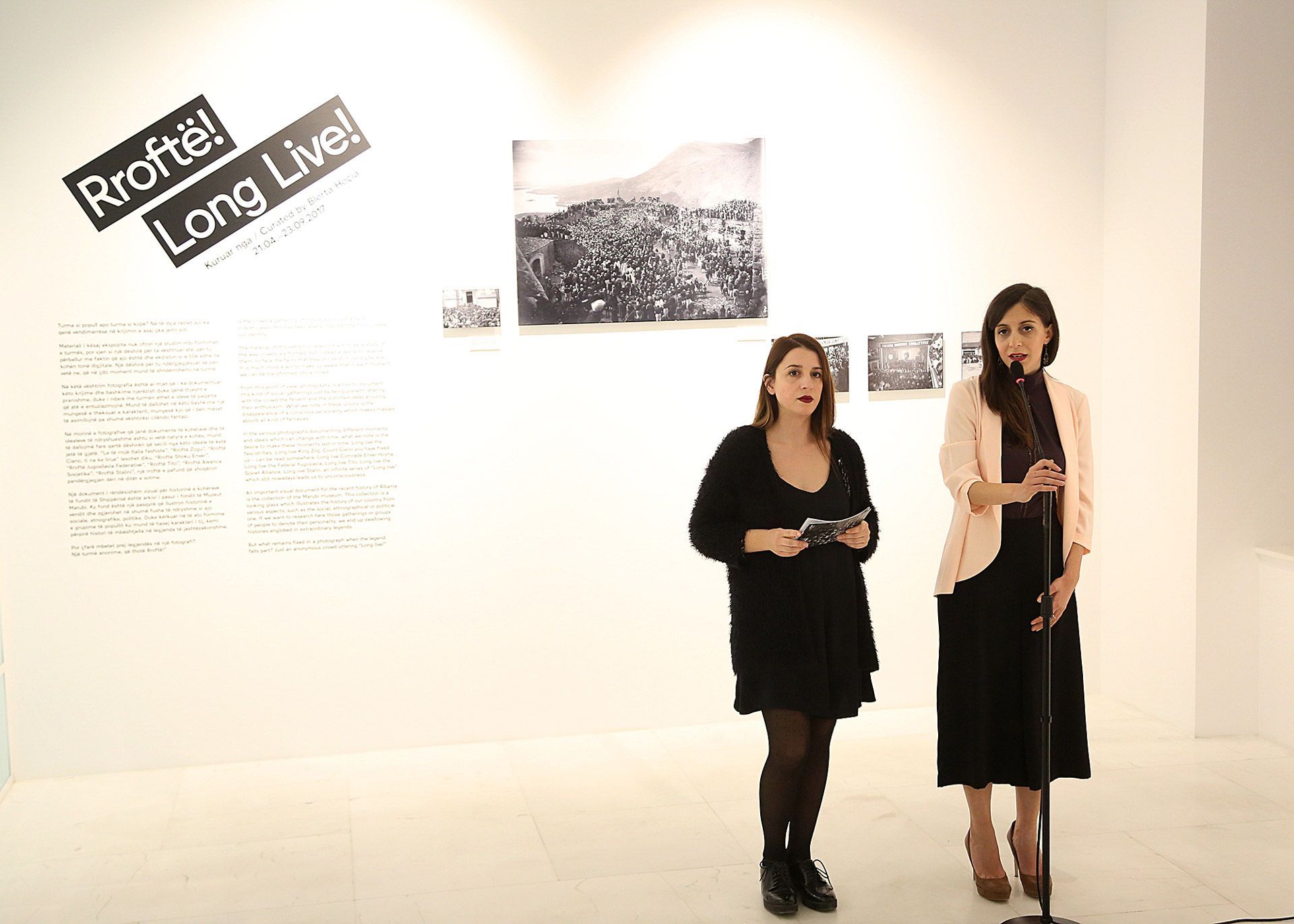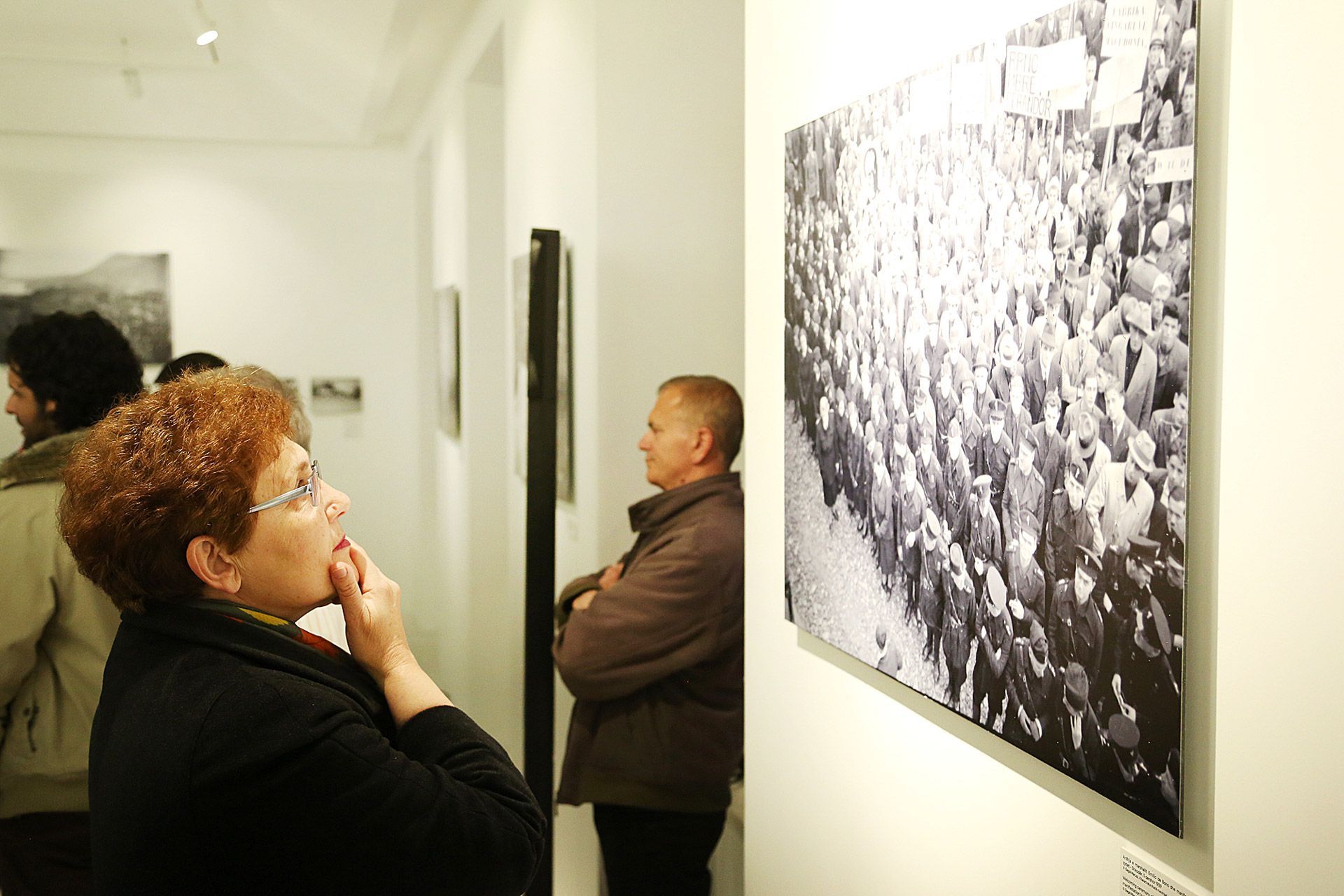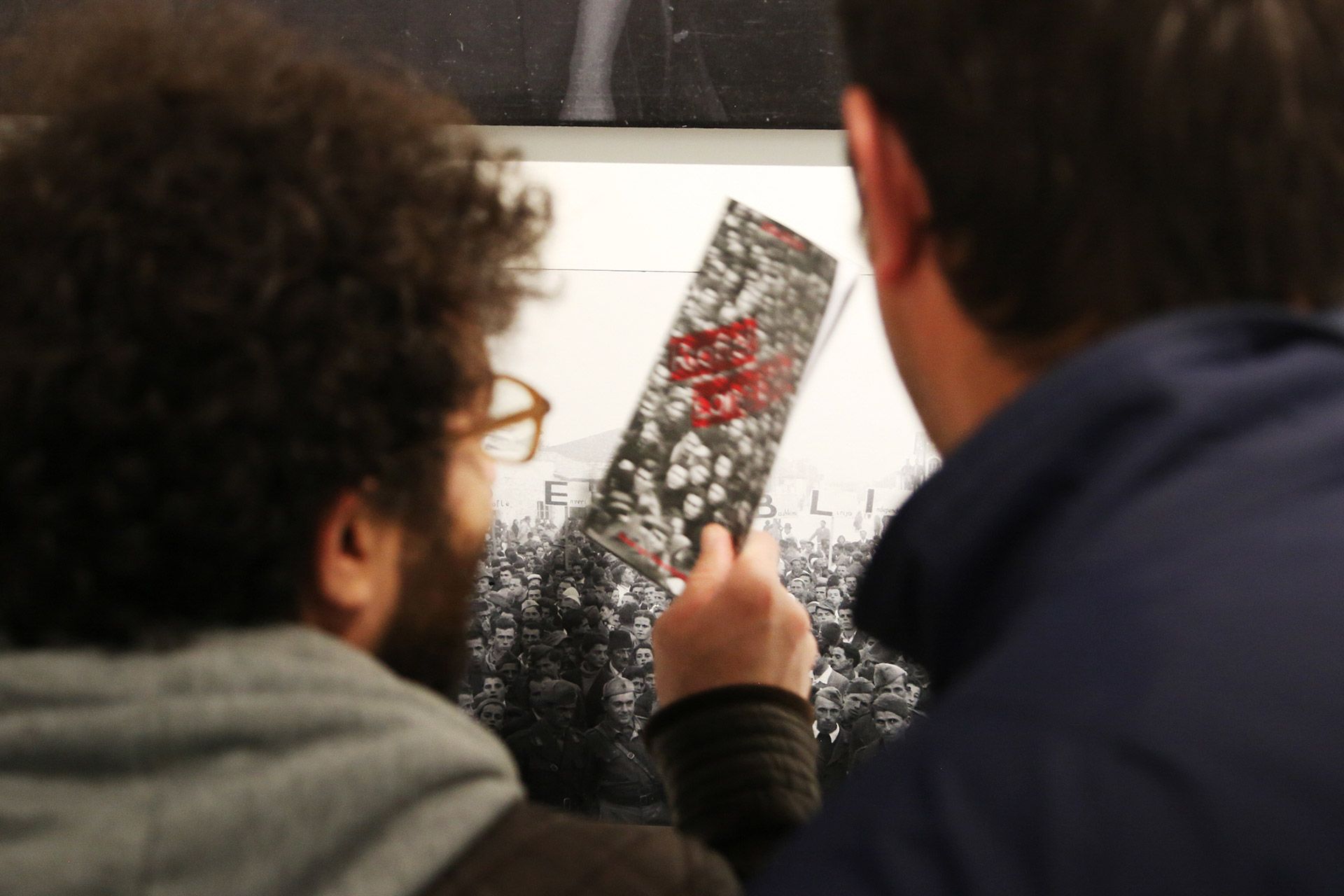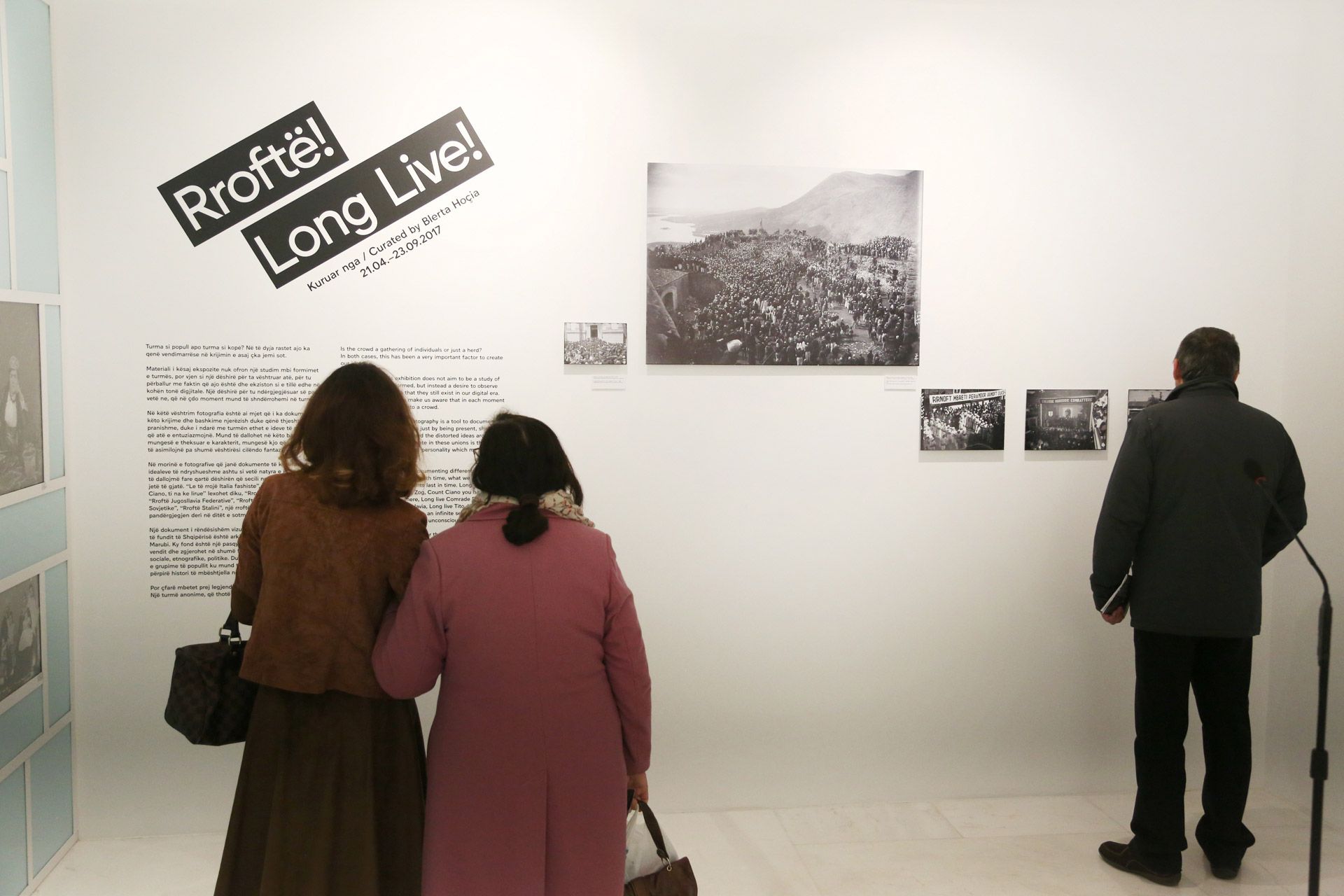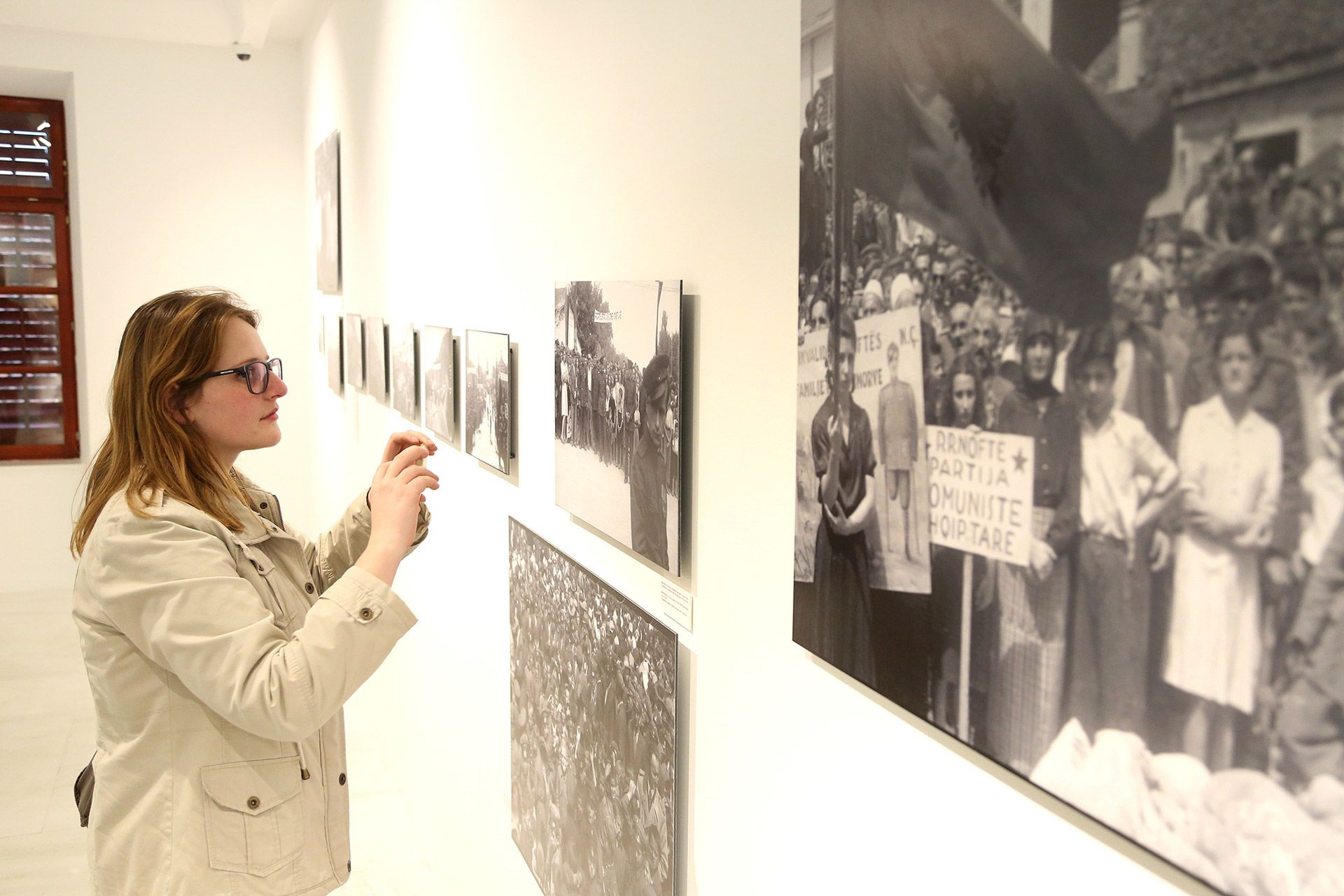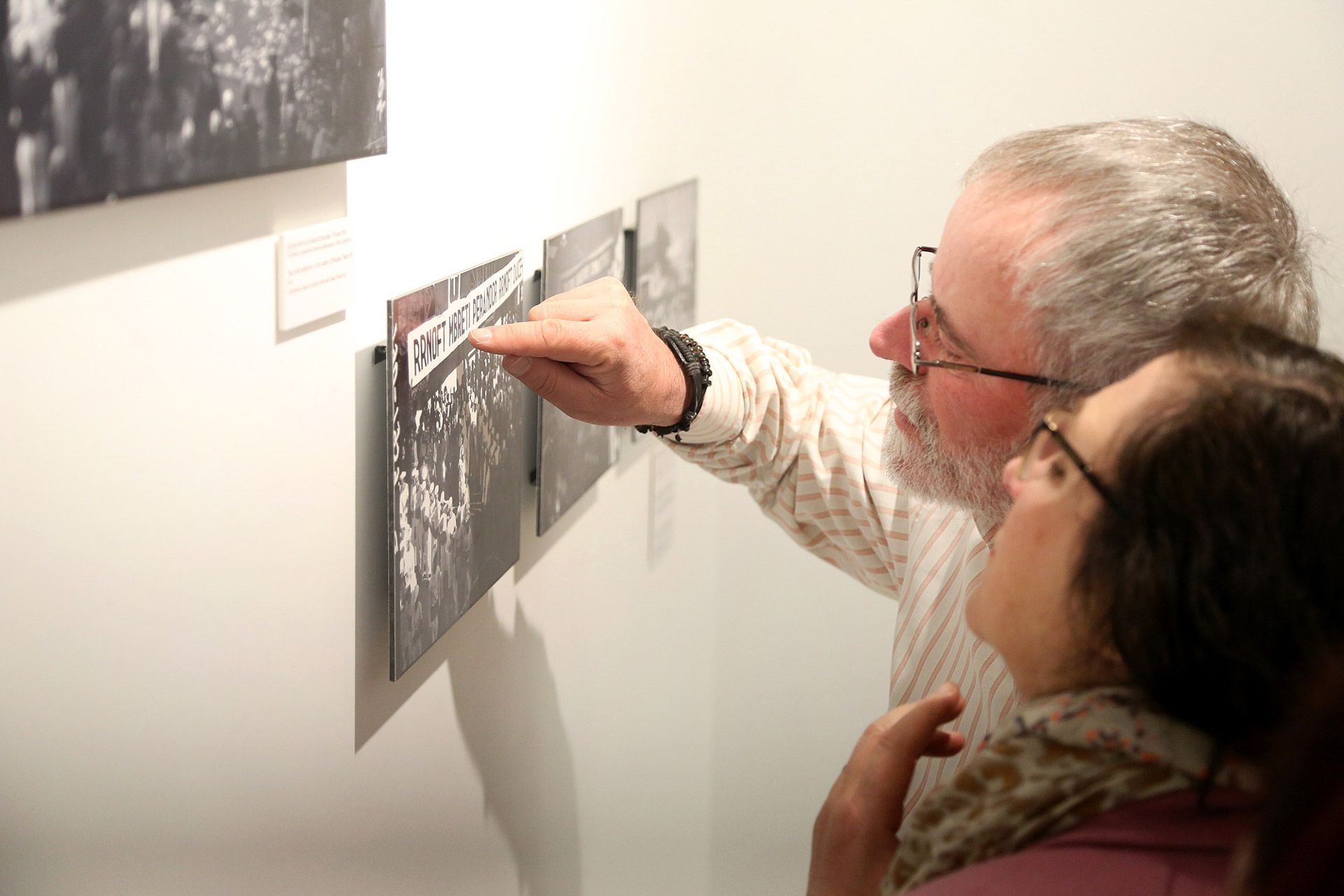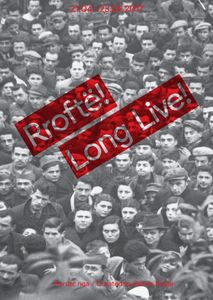Long Live!
–
Winds blow. They’ve always blown thus.
Where does the music end? Where does the uproar start?
In the crossways of time, a big question mark peeks perplexed
where does the nation end, where does the crowd start?
(Bardhyl Londo, extract from "Populist Democrats")
Is the crowd a gathering of individuals or just a herd? In both cases, this has been a very important factor to create our identity.
This exhibition aims to highlight a very important element in the development of all societies, often left in the dark: masses, crowds. By one side the heroic crowd raising the flag for the independence, by the other side crowds inspired from the various regimes.
According to the French anthropologist and sociologist Gustave Le Bon, the most important characteristics of an inspired crowd is a gathering of individuals submitted to the same exciting cause. Whoever are these individuals that compose it, however like or unlike is their intellectual level, they are transformed into a collective mind quite different from each individual composing it, a provisional being formed by thousand independent beings which disappears in the moment when a state of fascination exercises a sort of formula or ideal in their minds.
The material of this exhibition does not aim to be a study of the way crowds are formed, but instead a desire to observe them, to face the facts that they still exist in our digital era. It is much more a will to make us aware that in each moment we can be transformed into a crowd.
From this point of view, photography is a tool to document this kind of social gatherings just by being present, sharing with the crowd the fervent and the distorted ideas arousing their enthusiasm.
What we note in these unions is the disappearance of a conscious personality which makes masses absorb all kind of fantasies.
In the various photographs documenting different moments and ideals which can change with time, what we note is the desire to make these moments last in time. Long live the fascist Italy, Long live King Zog, Count Ciano you have freed us - can be read somewhere, Long live Comrade Enver Hoxha, Long live the Federal Yugoslavia, Long live Tito, Long live the Soviet Alliance, Long live Stalin, an infinite series of “Long live” which still nowadays leads us to unconsciousness.
An important visual document for the recent history of Albania is the collection of the Marubi museum. This collection is a looking glass which illustrates the history of our country from various aspects, such as the social, ethnographical or political one. If we want to research here those gatherings or groups of people to denote their personality, we end up swallowing histories englobed in extraordinary legends.
But what remains fixed in a photograph when the legend falls part? Just an anonymous crowd uttering “Long live!”
Exhibition Credits
- Curated by
Blerta Hoçia
- Supported by
Ministry of Culture of Albania




